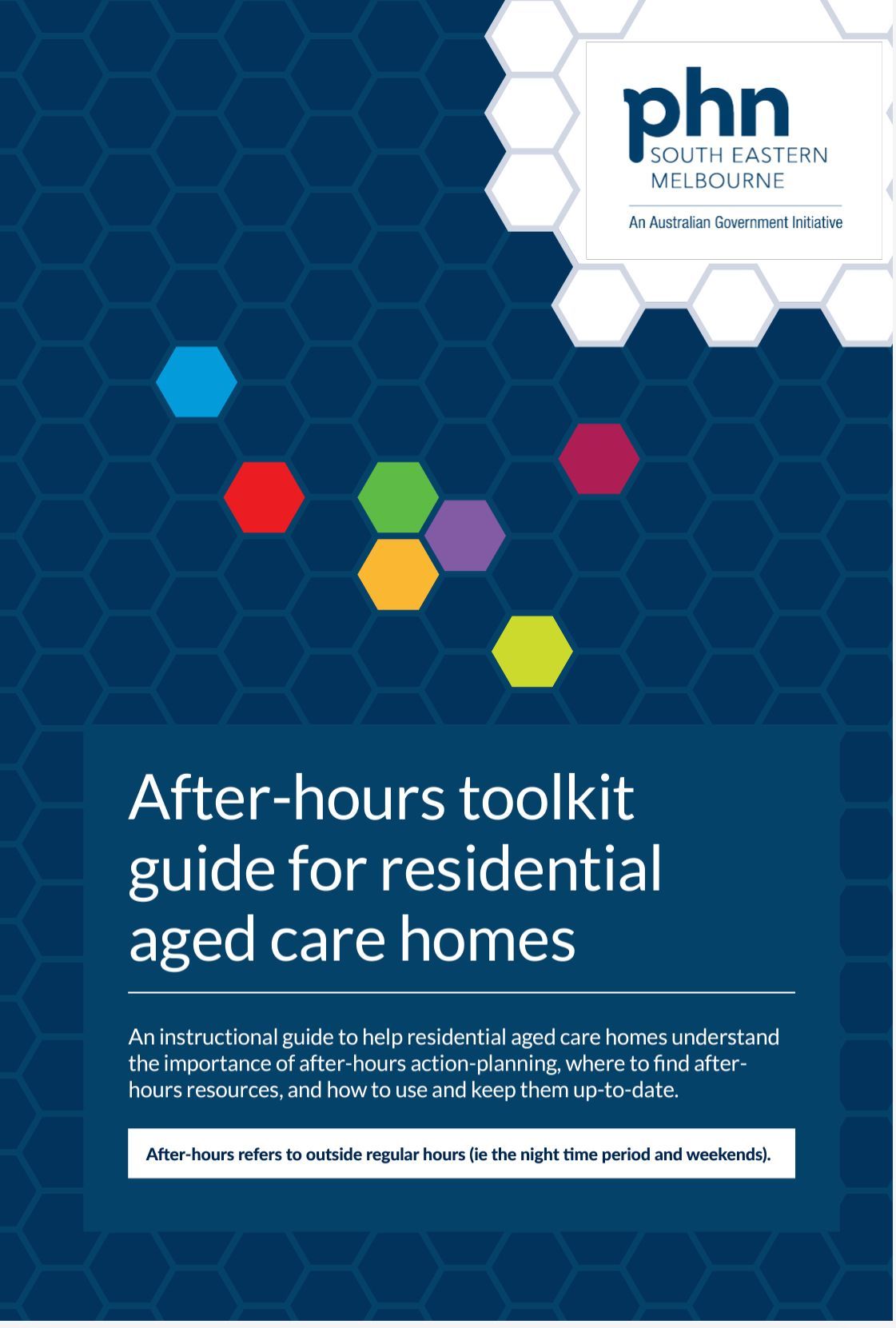Primary Health Networks (PHNs) are funded to support the Australian Government’s response to the Royal Commission into Aged Care Quality and Safety.
A key objective is for PHNs to bring greater awareness to residential aged care homes (RACHs) about the after-hours services provided by general practitioners and other health professionals.
These services can reduce hospital presentations for RACH residents, through providing appropriate care in the facility.
North Western Melbourne Primary Health Network and South Eastern Melbourne Primary Health Network have developed an after-hours toolkit, comprising 5 key resources to support RACHs in the after-hours period. These are intended to better prepare staff to identify which after-hours service is best to access depending on the nature of the incident.
Enhanced after-hours support for residential aged care homes
After-hours action planning
RACH residents can experience deterioration in their health during the after-hours period (defined as outside regular hours, ie the night time period and weekends), but immediately transfer to hospital is not always clinically necessary. Lack of awareness and utilisation of out of hours service provided by general practitioners (GPs) and other health professionals may result in unnecessary hospital presentations.
PHNs received funding to support the Australian Government’s response to the Royal Commission into Aged Care Quality and Safety. A key objective is for PHNs to bring greater awareness to RACHs about the after-hours services provided by GPs and other health professionals. These services can reduce hospital presentations for RACH residents, through providing appropriate care in the facility.
To assist RACHs to implement and maintain an after-hours action plan, a toolkit has been developed, comprising 5 key resources to support RACHs in the after-hours period.
How to use the after-hours toolkit
The after-hours toolkit has been developed following consultations with RACHs in metropolitan Melbourne about how to support after-hours processes in facilities to reduce emergency presentations.
The toolkit guide has instructions to help RACHs understand the importance of after-hours action planning, where to find after-hours resources, and how to use and keep them up to date.
How to use the Toolkit
This video has been developed for RACH after-hours staff. It explains the toolkit and how it can be used in RACHs.
Victorian Virtual Emergency Department: Using VVED for Residential Aged Care Homes
Further training
If you would like further training on the After-hours Toolkit, we can offer onsite or virtual sessions for you and your clinical team. Contact us at agedcare@semphn.org.au with your preferred time of day (allow 1 hour) and we will respond with available dates to meet your needs.
Additional after-hours resources
Explore all services and resources
View all services and resources across a number of topics.
View services and resources








